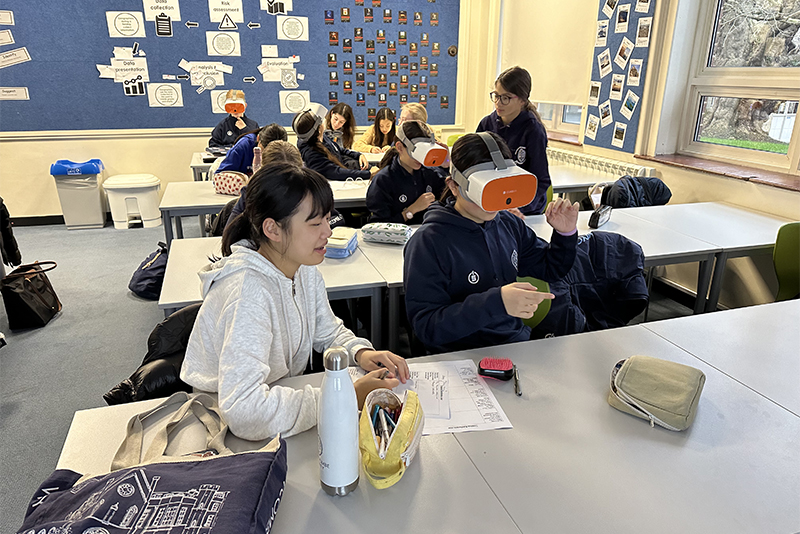Virtual Reality: A Tropical Rainforest Expedition in the Classroom
17 January 2024 - Academic

Although lessons provide valuable insight for pupils, many leave the classroom wondering what it’s like to experience environments, systems and people in the real world. As much as we’d like to take pupils on excursions and expeditions every week, the reality of our classrooms and curriculum means teaching needs to evolve and new ideas on how to immerse pupils into the learning experiences are developed. Recently, one geography class took a thrilling journey into the Amazon Rainforest without leaving the classroom – all thanks to Virtual Reality (VR).
Geography education is evolving, and VR can be at the forefront. Traditional methods can only do so much in conveying the complexity of the world and its ecosystems, like the tropical rainforest. VR brings these lessons to life, offering pupils a vivid and inviting experience.
In our recap lesson, to consolidate the learning they have been doing for this topic, pupils used VR headsets and were instantly transported through the layers of the rainforest. The lush greenery, ambient sounds, and interactive elements made it feel like they were on a real expedition. The tour then met up with indigenous tribes, linking the human and physical worlds together. We finished our journey in an area of heavy deforestation and explored the impacts of this on the environment. We also managed to find time to visit an orangutan nursery for orphaned babies – something our pupils will likely never forget.
Benefits Beyond the Rainforest
VR lessons present a risk of being labelled ‘gimmicks’. The strength of the technology needs to be beyond selling subjects and shock and awe, and act as a powerful learning tool. Beyond being a summary tool, VR enhances education, particularly in geography, in several ways:
1. As with all modern technology VR grabs pupils’ attention, making lessons more engaging and memorable.
2. It supports the development of the global citizen, offering pupils a global perspective without leaving the classroom.
3. Geography is more than just facts, maps and textbooks (as much as history teachers may have you believe), VR adds a multi-sensory layer to the learning experience.
4. VR makes the world’s biomes, cultures and wonders accessible to all, regardless of physical or travel constraints.
5. Whilst the initial outlay is high, the long-term cost benefits for schools of not needing to run as many trips by engaging in the virtual world should be a consideration for all.
Our VR rainforest recap proved that immersive technologies aren’t just tools; they’re gateways to a new era of impactful education. As a department, we will continue to evolve our practice, offering opportunities for practical digital fieldwork as well as immersive learning experiences for our girls.
Mr Simon Bannister
Head of Geography
Keep up to date with further news from Wycombe Abbey on our social channels.